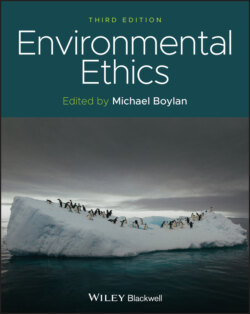Читать книгу Environmental Ethics - Группа авторов - Страница 31
Part II: Why Should We Care?
ОглавлениеThe Ethical Constraints on Interfering with Nature. If we accept the depiction in Part I of this chapter, then we already have an argument outline on why we should care:
1 There are two sorts of understandings of N/nature: (a) nature which refers to individuals (tokens) and (b) Nature which refers to larger, general groups (types)32—A(ssertion).
2 The systemic, operational mechanisms of both nature and Nature are intricate, complex, and difficult fully to understand—F(act).
3 Whenever one comes to a correct, partial understanding of intricate and complex systemic mechanisms there follows a reaction that is akin to aesthetic appreciation—A.
4 Aesthetic value-appreciation incurs a duty to protect that which has been valued—F.33
5 When one engages with nature/Nature and one comes to an understanding (on some level) of the causal operation of these systemic mechanisms such that one will both value nature/Nature and, as a result, be obliged to protect nature/Nature—1−4.
6 Coming to terms with understanding nature/Nature involves a model that situates individuals within communities (both proximate and remote)—A.
7 There are (at least) two large understanding of communities that all humans must recognize: human communities and N/natural communities—A.
8 Properly understanding the human communities and the N/natural communities requires an accommodation and engagement in both proximate and remote versions of the same—6, 7.
9 Duties follow from recognizing obligations that people have toward others—such as human and Natural communities both proximate and remote—F.34
10 All humans have a duty to engage in and protect their human and their natural/Natural communities—5−9.
